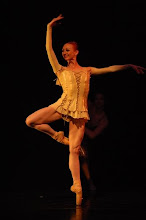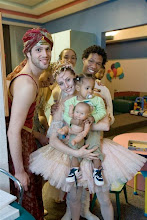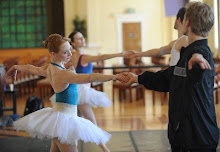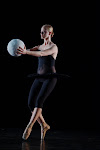 When New England Foundation for the Arts (NEFA) announced that its National Dance Project (NDP) has awarded $669,400 in Production Grants to support the development of new dance works during the 2009-2010 seasons, there was a joyous surprise in our studios. Twenty-one contemporary dance artists and companies—many of the largest, well-known national and international companies among them—will receive NDP Production Grants, and Ballet Memphis is proud to be on that list. Jane Forde, NDP Manager, could see in the various companies an aspect that is very important to Ballet Memphis, and that is an attempt to bridge cultures and create work that will truly engage communities across the United States.
When New England Foundation for the Arts (NEFA) announced that its National Dance Project (NDP) has awarded $669,400 in Production Grants to support the development of new dance works during the 2009-2010 seasons, there was a joyous surprise in our studios. Twenty-one contemporary dance artists and companies—many of the largest, well-known national and international companies among them—will receive NDP Production Grants, and Ballet Memphis is proud to be on that list. Jane Forde, NDP Manager, could see in the various companies an aspect that is very important to Ballet Memphis, and that is an attempt to bridge cultures and create work that will truly engage communities across the United States.Ballet Memphis' grant will go to fund a new work by choreographer Jane Comfort. Jane Comfort’s ballet, set to a score by Kirk Whalum, is a highly structured, abstract dance that blends classical ballet with contact and modern dance’s sensibility. Known in the business as Whitney Houston’s “sax guy,” the eight-time Grammy nominated African American musician Whalum has composed a score firmly rooted in the gospel tradition. Presented in an evening of mixed repertoire, the ballet celebrates the joy that is gospel: the ability to maintain an utterly enthusiastic and positive spirit in the face of dire circumstances and conditions.
The new work will premiere at this season's AbunDANCE: Joyful Noise, the premiere of Ballet Memphis in their new Midtown home in Playhouse on the Square. Once developed, the works will be available for national touring activity during the 2010-2011 or 2011-2012 performance seasons.
NEFA's National Dance Project Production and Touring grants are generously supported by the Doris Duke Charitable Foundation, the Andrew W. Mellon Foundation, the Ford Foundation, and the MetLife Community Connections Fund of the MetLife Foundation.
Score one for the little guys!

















